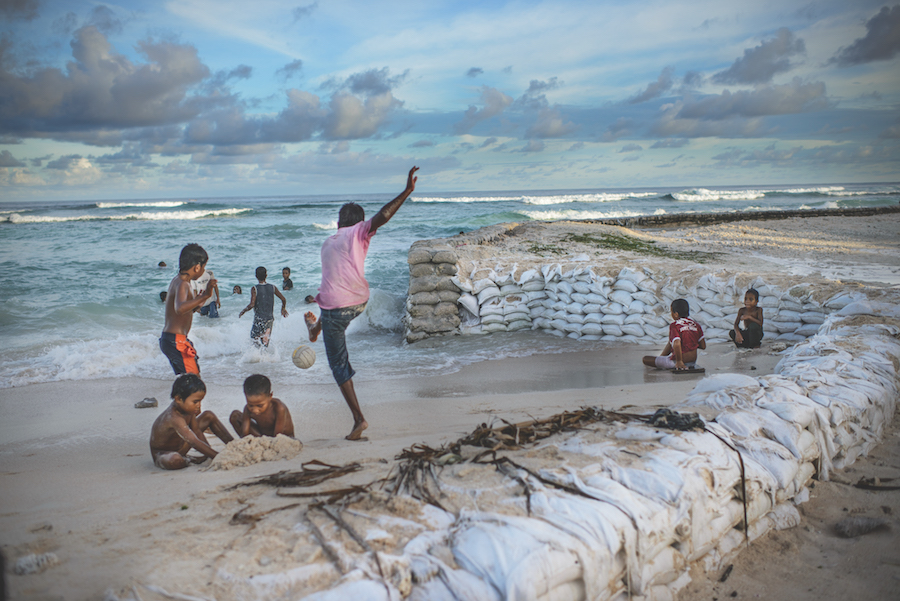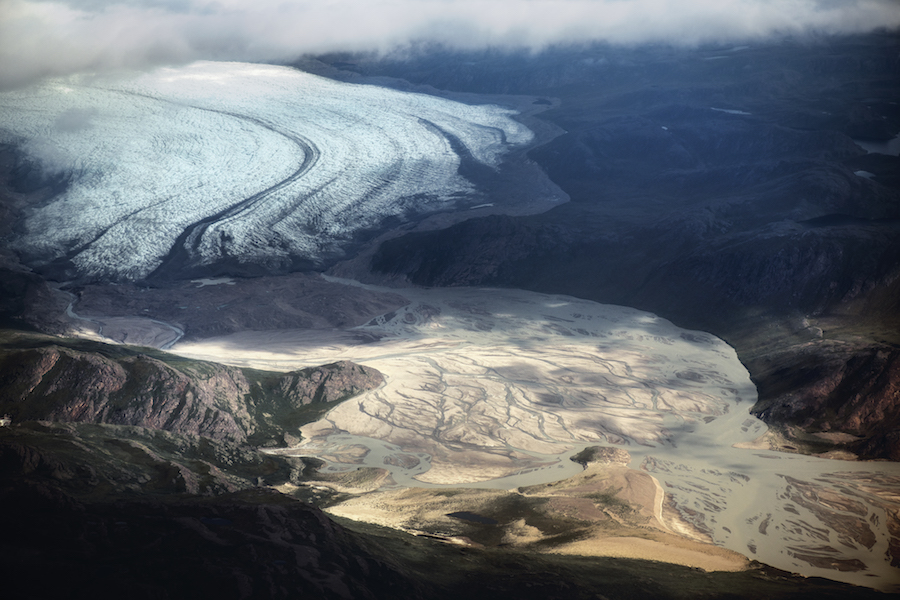Rising Tide: Worldwide

Jakarta, Indonesia
2018
Pluit in northern Jakarta remains vulnerable to sea level rise after a master plan for a giant sea wall was shelved. The plan instead is to move the entire city, but it remains unclear if just the government will move.
Fisherman of Muara Angke
2018
Jakarta is also sinking dramatically as its water use drains its underground aquifer. If this continues, the majority of this massive capital city will be underwater by 2050.
Guna Yala, Panama
2011
Norberto and Olga Hernandez live on Sucunguadup, one of 36 inhabited islands in Guna Yala. Rising water means the Gunas will need move to the mainland. Evacuation, scheduled to begin in 2012, has not yet started.
2014
Dialis Morris stands on the mainland where island residents will be relocated. Dialis would like to leave her island as soon as possible. “There are too many people on the islands now and my house is too small for my large family.”
Temaiku, Tarawa, Kiribati
2012
Children play on the beach where sandbags have been placed to try hold back the ocean at Temaiku, a vulnerable village on South Tarawa. In February, waves washed away this bulwark and rolled inland, leaving behind flooded homes, salty soil, and tainted wells. Temaiku is one of the most vulnerable areas on Tarawa. At high tide, the waves erode the shore line.
Terschelling, Netherlands
2019
On January 8, 2019, the Netherlands was struck by a heavy storm coupled with a spring tide. The island of Terschelling was hit hard and the quays and harbor of West Terschelling flooded. While this has happened before, such events are starting to take place much more frequently. Western Terschelling is not protected and future sea level rise will endanger the low-lying areas.
Greenland
2018
The edge of the ice sheet close to Kangerlussuaq with rivers of meltwater. Due to the climate crisis, the ice sheet slowly melts, forming streams, reservoirs, and underground rivers.
Bainpara, Bangladesh
2011
A mother and her daughter in their former village of Bainpara. Some houses remain but most were swallowed by Cyclone Alia in May 2009. After the water receded, it never returned to its old levels. In the district of Dakop, 60,000 people are still displaced, nearly the entire population.







